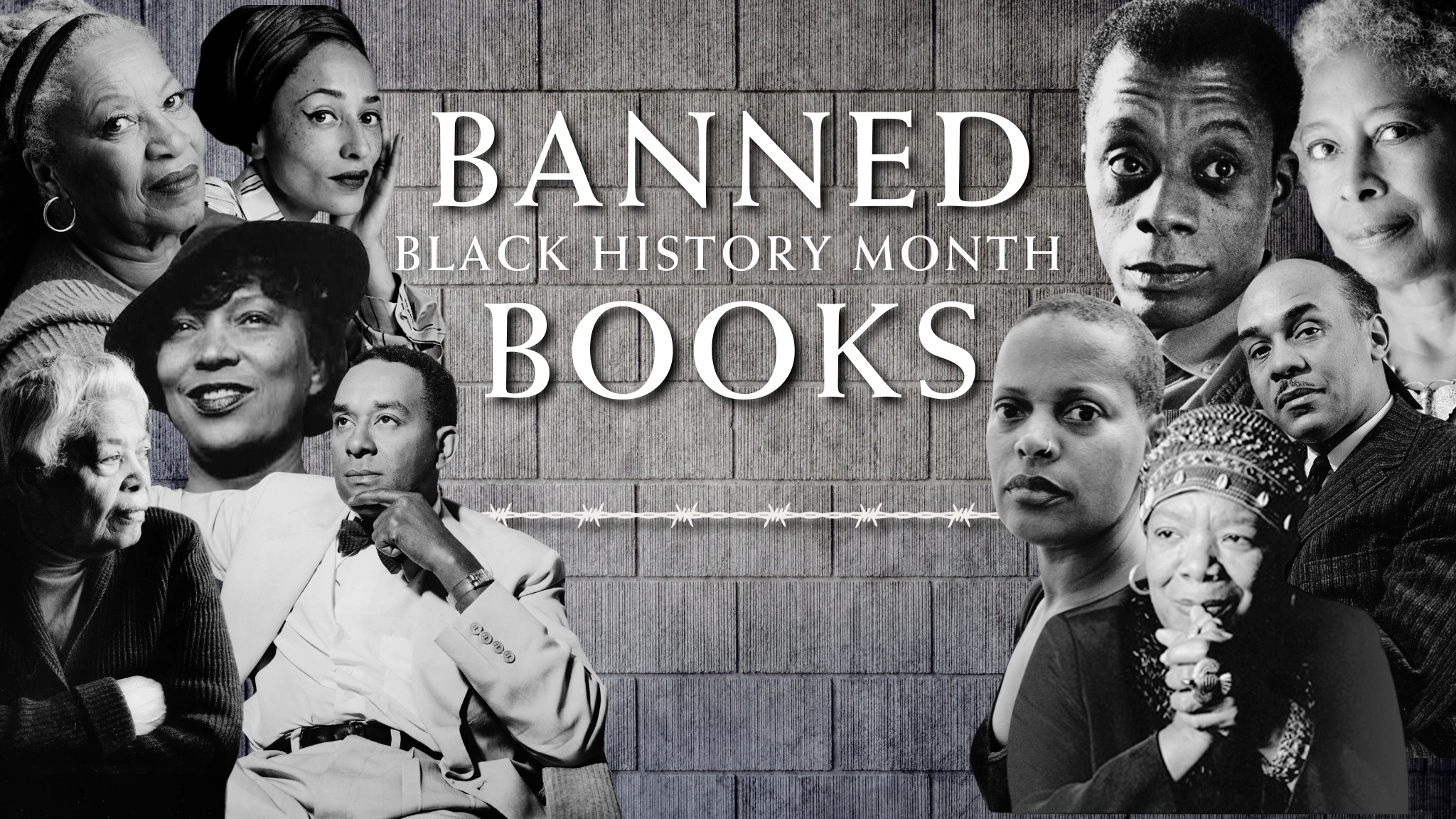Throughout history, Black writers have crafted powerful stories that challenge racism, inequality, and injustice, yet their books are often banned for doing exactly what they were written to do. This Black History Month, immerse yourself into these essential tales that have sparked controversy but remain crucial to understanding the Black experience.
These novels have been pulled from shelves for their unflinching depictions of race, sexuality, violence, and oppression. But censorship only proves their power.
Beloved by Toni Morrison
Banned for depictions of sexual violence, infanticide, and racial trauma.
Toni Morrison’s Beloved is a deeply moving exploration of the psychological scars left by slavery. Set in post-Civil War Ohio, it tells the story of Sethe, a woman who has escaped enslavement but is haunted by the ghost of her dead daughter. The novel intertwines themes of memory, trauma, and the struggle to find identity in the face of an oppressive past and delves into the complexities of motherhood, survival, and the weight of history.
Their Eyes Were Watching God by Zora Neale Hurston
Banned for sexual content, discussions of female agency, and use of African American Vernacular English.
Zora Neale Hurston’s Their Eyes Were Watching God follows Janie Crawford, a woman who embarks on a journey of self-discovery through her experiences with love, loss, and independence. Set in the early 20th-century South, the novel traces Janie’s relationships with three husbands and her search for personal fulfillment amidst societal expectations. Hurston’s rich storytelling, infused with Southern dialect and folklore, elevates the novel into a profound exploration of identity and empowerment. Celebrated for its bold portrayal of a Black woman’s quest for freedom, Their Eyes Were Watching God remains a cornerstone of American literature and a groundbreaking work of Black feminism.
I Know Why The Caged Bird Sings by Maya Angelou
Banned for depictions of sexual abuse, rape, and racial trauma.
Maya Angelou’s I Know Why the Caged Bird Sings is a powerful memoir that chronicles her early years growing up in the segregated South. Through vivid storytelling, Angelou explores the complexities of racism, sexual abuse, and personal identity as she navigates her tumultuous childhood and adolescence. The memoir captures her strength and determination to rise above adversity, offering an inspiring narrative of self-empowerment and courage. I Know Why the Caged Bird Sings remains a defining work of Black literature, celebrating the strength of the human spirit in the face of hardship.
Go Tell It On The Mountain by James Baldwin
Banned for depictions of homosexuality, religious criticism, and discussions of race.
James Baldwin’s semi-autobiographical novel is a deeply personal exploration of race, religion, and sexuality within a Harlem Pentecostal church. The book’s candid depictions of homosexuality and critique of religious hypocrisy have made it a frequent target for bans. Baldwin’s fearless storytelling remains as relevant today as it was in 1953, tackling the complexities of faith, identity, and racial injustice with an unflinching eye.
The Color Purple by Alice Walker
Banned for sexual violence, LGBTQ+ themes, and explicit language.
Alice Walker’s The Color Purple is a powerful story of Black women’s struggles in the American South, told through letters between Celie, a poor young woman facing abuse, and her sister, Nettie. The novel has been widely banned for its explicit depictions of sexual violence, incest, and same-sex relationships. However, its portrayal of love and self-discovery has made it a lasting classic, earning both a Pulitzer Prize and a National Book Award.
Invisible Man by Ralph Ellison
Banned for racial themes, strong language, and depictions of violence.
Ralph Ellison’s Invisible Man follows an unnamed Black protagonist navigating racism and identity in 20th-century America. The novel’s themes of systemic oppression, violence, and social invisibility have led to multiple bans, often under the vague reasoning of it being “too controversial” or “un-American.” Some school districts have objected to its strong language and depictions of racial brutality. Yet, Ellison’s work remains one of the most powerful examinations of Black identity in American literature.
Push by Sapphire
Banned for graphic depictions of incest, rape, and violence.
Sapphire’s Push tells the harrowing story of Precious, a young Black girl facing extreme abuse, illiteracy, and systemic neglect while striving for a better future. The book has been frequently challenged for its raw and disturbing content, with critics arguing that it’s too graphic for high school readers. However, Push sheds light on harsh realities that are too often ignored. Its unfiltered truth makes it a vital, if difficult, read.
White Teeth by Zadie Smith
Banned for discussions of race, religion, sexuality, and post-colonial tensions.
Zadie Smith’s White Teeth is a multigenerational novel exploring race, immigration, and identity in modern Britain. Though not as frequently challenged as other books on this list, it has faced bans and challenges in certain schools for its discussions of sexuality and religious tensions. With its witty, sharp storytelling, White Teeth captures the complexities of multiculturalism, making it a modern classic.
Native Son by Richard Wright
Banned for graphic violence, sexual content, and controversial racial themes.
Richard Wright’s Native Son is an unflinching look at systemic racism and violence in 1930s America. The novel follows Bigger Thomas, a young Black man who accidentally kills a white woman and spirals into further violence. Native Son has been banned for its stark portrayals of race relations and crime. Yet, Wright’s novel remains a seminal work in American literature, forcing readers to confront uncomfortable truths about race and justice.
The Street by Ann Petry
Banned for discussions of racism, sexual harassment, and economic hardship.
Ann Petry’s The Street follows Lutie Johnson, a Black single mother trying to escape poverty and systemic oppression in 1940s Harlem. The novel has faced bans for its stark depictions of racial and gender-based struggles, with critics arguing it paints too bleak a picture of urban Black life. Yet, its portrayal of a woman’s fight for autonomy in a world stacked against her remains as relevant today as ever, making it a must-read.
